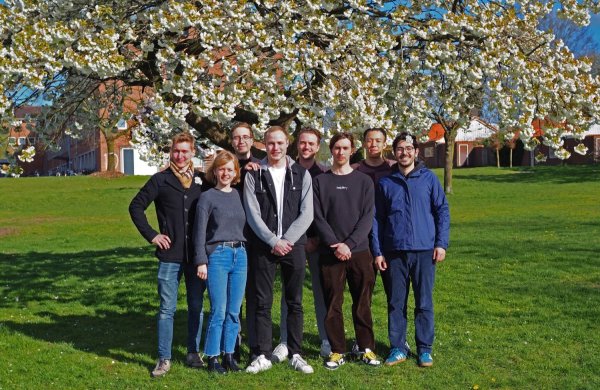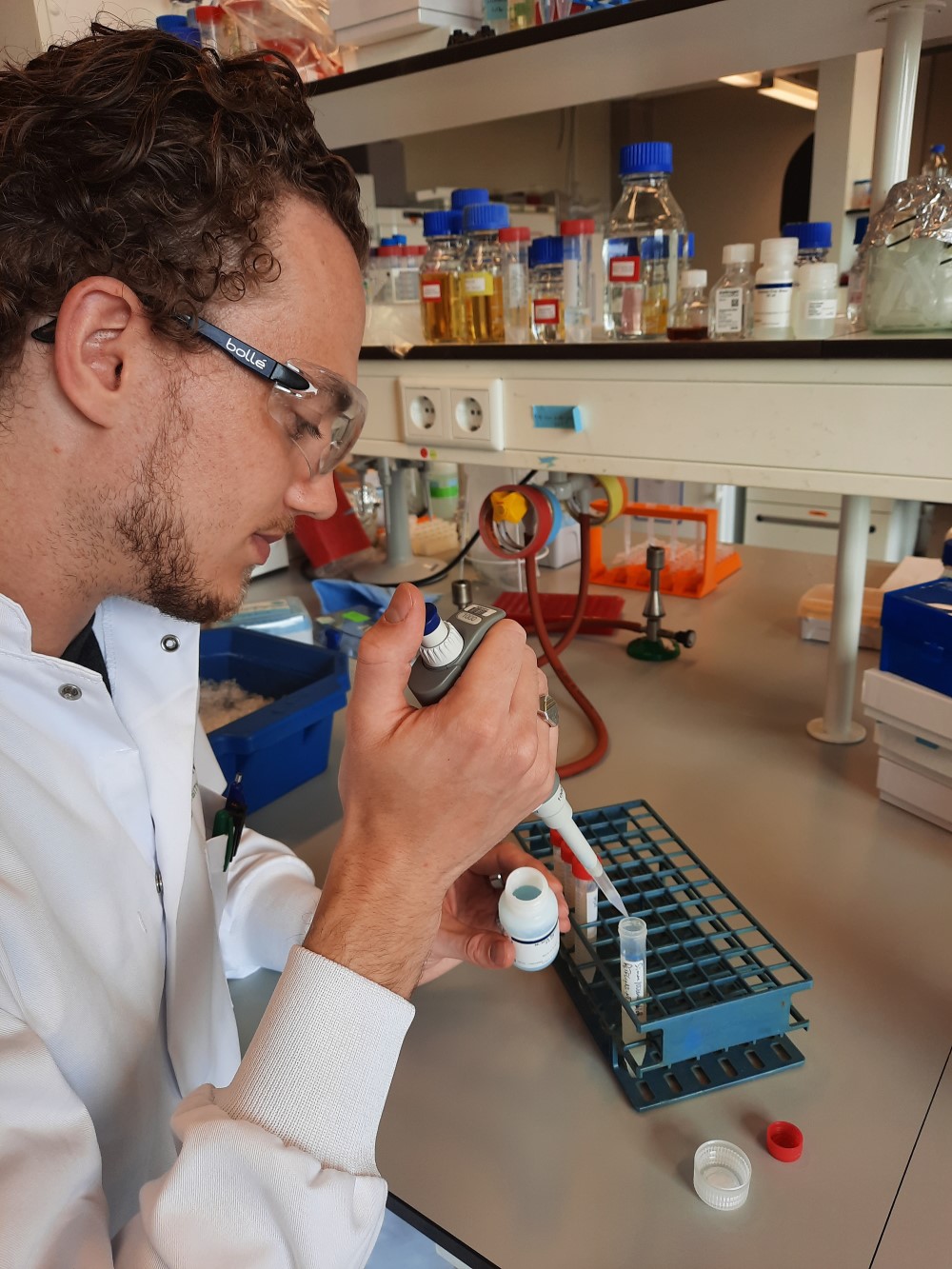
Interview
Students protect fruit trees from frost damage with ‘birth control injection’
Climate change brings about more frequent shifts between frost and warm days during winter, which is rather confusing for trees. Just as they're about to bloom, snowflakes descend upon their freshly formed buds – with damages or even kills the bud. Such frost damage costs fruit growers fifty to ninety percent of their yield. A group of students from Wageningen University & Research tackles this issue head-on in the international competition iGEM.
Eight Wageningen students put their studies on hold for over half a year to work together on a solution for frost damage in fruits and flowers. Their idea? To 'reprogram' fruit trees using genetically modified bacteria to delay the moment of blooming. Team leader Johannes Heisterberg shares his enthusiasm from his student residence. “You can think of it as a sort of contraceptive pill for trees.”
Why are you so passionate about fruit trees?
“I have experienced the damage up close. My uncle owns an orchard, and I've witnessed the tremendous impact weather conditions can have. A severe hailstorm can destroy the majority of his yield. There are also growers near Wageningen who struggle with the weather, especially frost. When frost is expected, they spray a protective layer of water on their plants or place fire bowls in the orchard. It requires quite a bit of work and is – in the case of fire bowls – also quite risky.
It is about more than just the trees.
Moreover, climate change, the main driver behind frost damage, poses one of the greatest threats to my generation. Damage to fruit trees once again highlights how much it affects everyone. Reduced fruit production does not only mean lower yields for farmers, but also more expensive fruits that will only be affordable to a select few. So, it is about more than just the trees.”
Your idea is to reprogram trees using bacteria. How does that work?
“Plants regulate their reproductive organs (the flowers) using hormones, just like humans. Anti-blooming hormones suppress flowering in winter, while pro-blooming hormones take over when the temperature rises. My team is developing special soil bacteria that produce extra anti-blooming hormones. When these bacteria grow around the roots of the fruit trees, they inject the anti-blooming hormone into the roots of the tree using a kind of needle. This shot prevents the trees from producing flowers.”
Does that not completely prevent flowering?
“Our bacteria provide the trees with extra anti-blooming hormone, but within a plant there is always a competition between anti-blooming and pro-blooming hormones.
When it is truly springtime, the tree produces so many pro-blooming hormones that they win the competition. So, the special bacteria delay the moment of blooming, but they will never fully suppress it. If necessary, we can also use a kind of built-in shutdown mechanism that allows us to kill the bacteria. That naturally halts hormone production.”

How do you obtain these special hormone-producing bacteria?
“We use the common soil bacterium Pseudomonas fluorescensand modify its DNA in the lab. We insert the genetic recipe for the anti-blooming hormone into the bacterium. Because the bacterium does not differentiate between its own DNA and this 'foreign' genetic material, it produces the hormone within the cell and then releases it. Additionally, we make some extra modifications to the bacterium's DNA. These are safety measures to prevent the bacterium from growing in the wild.”
It feels like we are independent, like a startup: we identified a problem, came up with potential solutions, and selected the best one.
That sounds like quite a task for a group of students with relatively little lab experience.
“For exactly that reasons I feel nervous and excited at the same time. This is our first project where we are working completely independently. We do receive guidance, but during our studies we always worked for someone else or conducted brief experiments during a practical. Now, things are getting serious. Fortunately, we can always rely on the university and our mentors, so we will not fall too deep if experiments fail. Still, it feels like we are independent, like a startup: we identified a problem, came up with potential solutions, and selected the best one. At the same time, we are creating our own website, a logo, seeking funding, and communicating our work to the outside world. A while ago, for example, we taught a class about plants and bacteria at an elementary school.”
That's a lot of tasks. How do you divide the work?
“We are a relatively small group. Five of our students work in the lab to genetically modify the bacterium. The remaining three students simulate and model our idea on the computer. Personally, I am one of the lab rats, and I am constantly amazed by what my groupmates achieve with complex software. For instance, they simulate how a vast community of soil bacteria behaves and interacts with each other. This helps us estimate how our genetically modified bacterium interacts within the complex network of soil bacteria.”
Our team is filled with talented and motivated students. That is why I trust that we will end up somewhere at the top.
How do you rate your chances of winning?
“During the finals, all teams receive a bronze, silver, or gold medal. In the last years, the Wageningen team has consistently received the gold medal, the highest recognition, signifying their work was excellent. We aim to maintain that high standard and secure a gold medal once again. Besides the medals, teams also win awards in various categories during the finals, ranging from the best promotional video to the best presentation, the best project in sustainability, and the best plant project. Of course, there is also a grand prize for the best team.
iGEM teams usually consist of around fourteen students. We are only eight, and the competition runs until November. That is when we need to have a proof of concept. With only 24 hours in a day, we will likely accomplish less than other teams. But I feel optimistic. Our team is filled with talented and motivated students. That is why I trust that we will end up somewhere at the top.”
What is iGEM?
iGEM is an international competition where student teams from around the world use synthetic biology to solve global problems. Topics range from medical applications to improving the environment and creating more or healthier food. This year, over four hundred teams are competing, and they will come together during the finale in Paris from 2 to 5 November. During the so-called Grand Jamboree, all teams present their work, and a jury evaluates each team on various aspects.